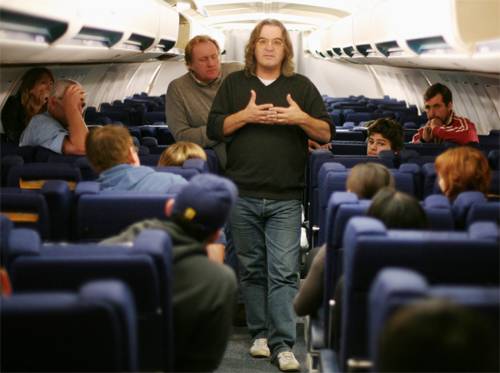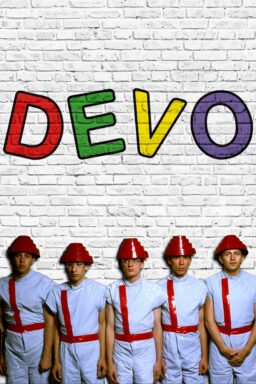Paul Greengrass believes that two hijackings took place on Sept. 11, 2001. The director of “United 93,” the extraordinary new film about the events of that day, lists them:
1. “Four airplanes were hijacked, leading to the deaths of a large number of innocent people. That hijacking we all acknowledge.”
2. “There was also the hijacking of a religion. Because that’s what occurred when a group of young men, jihadists, who selectively ignored the great bulk of thousands of years of Islamic tolerance and learning, asserted an absolute perversion of Islam as the one true interpretation.”
When he lists these two hijackings, he is speaking outside his film. One of the strengths of “United 93” (which opens Friday) is that it takes place absolutely in the moment, as one event follows another and the people involved try to rise to the occasion. The movie is not political, not ideological, sees all its characters with the same level point of view and avoids as nearly as possible every cliche associated with the genre of “disaster movies.”
The movie re-creates a moment in time when the name Osama bin Laden was not widely known, and indeed when even the number of hijacked planes had to be guessed at. “We’re in some kind of a war,” one of the controllers says, “but I don’t know who with.”
When the movie was being made, and especially after its trailer appeared, some said it was “too soon,” or in bad taste. Those objections are likely to evaporate as audiences see the film itself. It does not exploit. So painstaking is its storytelling that it was made with the cooperation of the survivors of the dead passengers. “On the back of their cooperation,” he said, “we were able to reach out to the actual people who were working in air traffic control, the military command center, and so on, to relive what occurred.”
Greengrass, who grew up surrounded by the Troubles in Northern Ireland and made “Bloody Sunday” (2002) about a British army massacre of peace marchers, thinks he was ready to make “United 93,” almost called to it.
“What’s the point,” he asked, “of having made those films and lived the life I’ve lived and been to the places I’ve been, and studied the issues, if I don’t address the most important issues of today and tomorrow?”
Working with many of the actual participants kept him accurate, he believes.
“There is a scene inside the military command center where we see a young woman with blond hair who reacts as the second plane hits. She is in shock and tears. That woman had that job standing at that desk in that room on the day,” he said. “She had a complex technical job, processing communications. When we shot there, I suggested they do it like they do in military exercises. She drives the floor exactly like she always does; although things went wrong on the ground, she still keeps on working.”
Greengrass, talking by telephone, said he wanted to “strip out any presuppositions or conclusions, and relive the day in real time as nearly as we can.”
I observed that there is a sequence when the military is desperately trying to get presidential authorization to take aggressive action and cannot contact the president. Many people, I said, will connect that with the scene in Michael Moore‘s “Fahrenheit 9/11” when George W. Bush is informed of the attack on the towers and remains seated in a Florida classroom for seven minutes.
Greengrass said that information doesn’t belong in his film. “All we know,” he said, “is what the people in those rooms knew, when they knew it.”
When he cannot be reasonably sure of what happened on board United 93, he avoids speculation. The battle for control of the plane, which lasted six minutes, is seen as a sort of desperate confusion, with specific actions not assigned to specific people. “I said to the actors, in the final six minutes of courage, agony, horror and inspiration — you are those people, trying to save yourselves and return to your families. They faced hard choices with immense courage.” In the cockpit struggle, there is no way to see whose hands are on the controls.
He deliberately avoided using recognizable actors in the film, Greengrass said: “It seems to me that 9/11 is, above all, the story of ordinary people, overwhelmed by something that was unimaginable and unimagined. With movie stars, you could never get that quality. It was important to make it a small film, with unknown people. You got an authenticity. And we had the real people on the set who corrected us when we had something wrong.”
The four actors who played the terrorists, he said, faced a great challenge: “Whatever we do or don’t know about them, we know for sure that the terrorists looked like normal passengers, not monsters. Those four young actors can illuminate something really important about 9/11, which is that the hijacking of Islam continues, it’s getting worse, and we’re not going to be able to solve that on our own.
“You have young jihadists saying, ‘This proves ours is the true way.’ That has become a rallying cry across the Muslim world — a fact pretty hard for us to grasp. We have to ask ourselves, whether our subsequent actions, justified or not, made the hijacking of Islam more successful, or less.”












